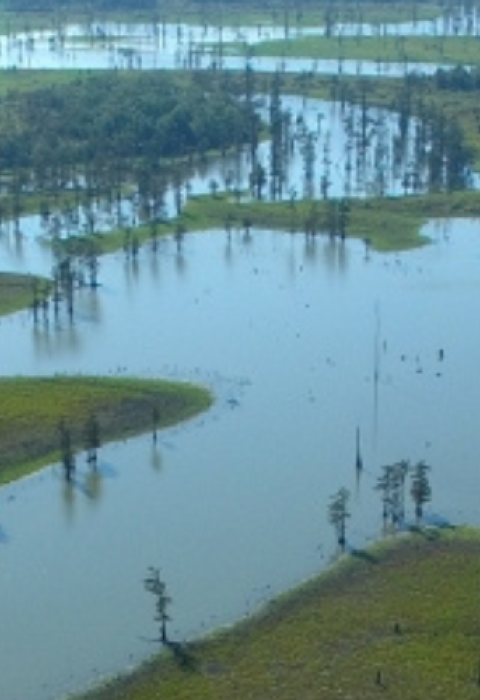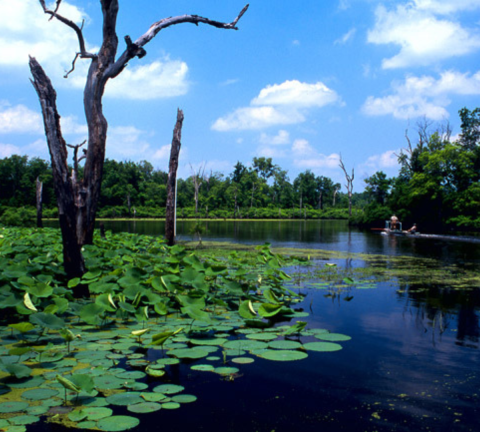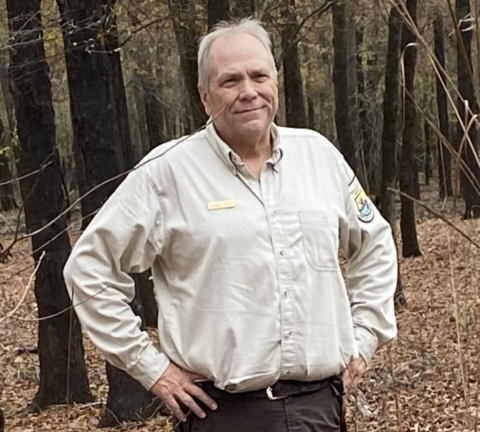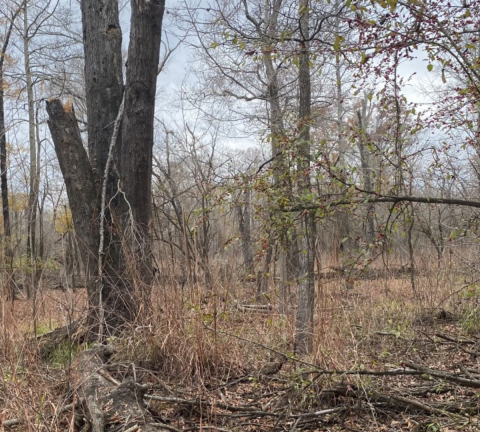Crossett, Arkansas – In Florida, you can see the sea rise year after year. In Louisiana, you dread the increasingly nasty storms and hurricanes. Climate change, in the South, is easily observed along the Atlantic Ocean and the Gulf of Mexico.
But what about inland, away from the warming waters and ever-harsher weather? Do locals experience Mother Nature’s worsening wrath? Are lives, homes, forests, crops, and wildlife also endangered as you travel further and further from the coasts? Is climate change climate change
Climate change includes both global warming driven by human-induced emissions of greenhouse gases and the resulting large-scale shifts in weather patterns. Though there have been previous periods of climatic change, since the mid-20th century humans have had an unprecedented impact on Earth's climate system and caused change on a global scale.
Learn more about climate change real?
Yes.
But it’s not as in-your-face in, say, Crossett – the pine-and-paper capital of south Arkansas -- as it is in Miami or New Orleans. Warmer temps, heavier rains, and more frequent droughts are the telltale, damaging signs of climate change across inland America. It’s making Arkansas farmers plant and harvest earlier, or perhaps sow different crops. Hunters aren’t bagging near as many mallards as they did a decade ago. And gardeners from Little Rock on down to Crossett can experiment with tropics-loving plants like oleander and pineapple guava.
The vagaries of a warming world collide at the Felsenthal National Wildlife Refuge, just outside of town. Too much rain, and too much heat, create insupportable conditions for plants, trees, and birds -- and wildlife managers whose job is to maintain the natural world prized by hunters, anglers, birders, hikers, and others.
“The climate is getting wetter here,” said Michael Stroeh, the project leader for Felsenthal, Overflow, and Pond Creek refuges. “We flood almost every year now, and the floods last four to six months. It’s not natural for those trees to be flooded as much. And then we’ll go to almost-drought conditions.”
Water, water everywhere
You’d think water would be the least of Felsenthal’s problems considering the refuge itself was created to handle the massive amount that sits behind the Felsenthal Lock and Dam. The 76,000-acre refuge is also where the Ouachita and Saline rivers meet and nourish countless sloughs, creeks, and oxbow lakes.
Arkansas averages a healthy 49 inches of precipitation a year, according to the National Oceanic and Atmospheric Administration which keeps records back to 1895. Yet five of the 11 wettest years have occurred since 2009. And, in each of those years, at least 65 inches of rain has fallen on The Natural State.
2022 offered about average rainfall (51 inches), but 2023 started out with a bang. The city of El Dorado, not far from the refuge, logged nearly 10 inches of rain in January – with most falling within a 24-hour period early in the month.
“The most pressing climate-related concern for Arkansas is the increase in heavy rain events, severe flooding, and storms,” the Environmental Protection Agency reported. “Heavy downpours and increasing annual rainfall can have catastrophic effects.”
Unlike coastal areas, rising temperatures in Arkansas aren’t contributing much to the surge in precipitation. The temperature statewide has warmed a relatively mild one degree since 1975 to an annual average of 61 degrees.
Yet the plant hardiness zones, published by the U.S. Department of Agriculture, paint a more startling picture. The color-coded maps, based on the rise in average minimum winter temperatures, show farmers and gardeners what plants will grow well and where. South Arkansas is now plastered in yellow, the zone found historically along the coastal plain of Louisiana. Plants that once thrived two hundred miles below Crossett now do well at Felsenthal and surrounding areas.
“Arkansas has completely gone from one zone to another,” said Doug Zollner, director of science and strategy for The Nature Conservancy in Arkansas. “You get earlier spring green-ups which entails a lot of adjustments, mostly by farmers. They’re changing crops, moving up the dates for planting and harvesting. They’re the most attuned to climate change, even if they still won’t talk about climate change.”
Rising temperatures lead to increased evaporation which decreases the amount of water that can seep into the soil for later use. The loss of soil moisture turns dry spells into droughts.
“We go from flooding to almost drought conditions,” said Stroeh while giving a tour of the refuge on an unseasonably warm – 73 degrees – winter day. “We needed rain bad from July until just recently.”
He got it – in buckets-full. He parked his Ford F-150 along Bolding House Road and walked downhill through scrub-shrub thickets toward the bottomland hardwoods that flood each winter. The ground, underneath a carpet of oak leaves, was saturated. Three good-sized, and startled, wild hogs skittered toward Upper Spring Bayou. A cluster of endangered red-cockaded woodpeckers lives in these woods.
“Higher up, most of the trees are willow oaks. But as you get closer to the water, the vegetation changes and the trees change,” Stroeh said. “This stand is fairly healthy yet. But you’ll see the difference in the next stand when we get into overcup (oaks). Overcup is slowly invading this section. It’s expanding here because of the water. And that’s not a good thing.”
Stressed, dying oaks
Felsenthal’s bottomland hardwoods are intentionally flooded in the fall to provide prime habitat for wintering, migratory waterfowl. The refuge’s 15,000-acre pool, which backs up to the dam, grows to 36,000 acres once flooded. The pool was only 5,000 acres prior to the dam’s opening in 1985. Then, the Service, the U.S. Army Corps of Engineers (which operates the dam), and other federal and state agencies began planting hardwoods across the bottomlands. The trees are usually surveyed every five years to determine growth, health, and mortality. Initially, the reports were encouraging: the added moisture didn’t stunt growth and the acorns – food for ducks and other critters – continued to rain down.
Twenty years later, though, the scientists were singing a different tune.
“After two decades of GTR management, mortality of mature trees has continued and was 2 to 3 times greater than normally expected mortality rates of similar bottomland forests,” reads a 2010 report by USGS’s National Wetlands Research Center. “Continued annual flooding at Felsenthal NWR will result in severe additional mortality of primarily willow and Nuttall oaks.”
One-fourth of all trees in the reservoir died. Most were stressed out. They couldn’t handle the near-constant high water. At least the willows and Nuttalls – whose acorns are prized by ducks – couldn't. An earlier study showed that Nuttalls were producing 50 percent fewer acorns. Overcup oaks, though, thrive in high water. But their acorns are considerably larger than willow nuts and ducks won’t eat them.
“The most abundant species, overcup oak (flood tolerant), seems to be best suited for the current hydrological condition throughout most of the green tree reservoir,” the report concluded.
The ducks aren’t happy. Neither are hunters. In 2011, 1.4 million ducks were harvested in Arkansas, according to the state’s Game and Fish Commission. A decade later, 900,000 were.
“Everyone says, ‘Well the ducks don’t come here like they used to,’ and that’s true,” Stroeh said while driving to the other side of the green tree reservoir. “Is that possibly related to acorn production? Yes. Weather plays a big role too, cold weather in particular. There are so many factors to tease out.”
'We’ve had enough’
It’s also difficult to parse which has a bigger impact on the oak trees: The annual, man-made flooding? Or the storms, hurricanes, and heavy rains? The USGS reports says the Army Corps should open the floodgates more often and reduce water in the green tree reservoir. Zollner, with the Conservancy, says maybe duck hunting dates should be changed.
Changes will have to be made; Mother Nature isn’t fooling around. NOAA predicts “historically unprecedented warming is projected during this century” with average annual temperatures likely to rise five degrees if the amount of carbon dioxide pumped into the atmosphere isn’t reduced. Wintertime precipitation is also projected to rise across Arkansas by midcentury. And, droughts “are projected to be more intense,” NOAA says.
Stroeh drove to Pine Island and into a forest of oak, sweetgum, western mayhaw, blueberry hawthorn, bluestem, and sedges. The bigger trees did not look healthy. The willow oaks were dying, their crowns diminished and scraggly, their lower limbs splintered and broken. Carpenter ants – known to attack stressed trees -- feasted along the base of some oaks.
“See through there all the trees breaking down?” Stroeh said pointing to a small group of willows. “They get too much water which is being held back here by the lock and dam. These trees have said, ‘We’ve had enough. We can’t take it anymore.’”
He paused before adding, “The question is, can we maintain willow oak or just walk away and say it’s just going to be an overcup forest and waterfowl will have to play a much smaller role on the landscape? If you lose willow oaks, you lose that diversity of plants and wildlife and, maybe, just maybe, we all lose.”
This story is part of a collaborative effort to explore how climate change is impacting hunting and fishing across the United States.







